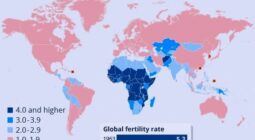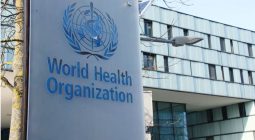Today the world’s population is breathing polluted air.
Pollution is the introduction of contaminants into the natural environment that cause adverse change. Pollutants made of harmful materials into the environment because of pollution damage the quality of air, water, and land. It also could be natural, such as volcanic ash. Runoff produced by factories could also create pollutants
The pollution could be categorized as air, light, litter, noise, plastic, soil contamination, radioactive contamination, thermal pollution, visual pollution, and water pollution.
The UN health body- World Health Organization (WHO)’s latest findings say that 99 per cent of people live in areas where air pollution exceeds safe levels.
The report prepared by the University of Chicago’s Energy Policy Institute, released early this week, the Air Quality Life Index (AQLI) report for 2022 says that air pollution is the biggest threat to human life globally.
The contamination chops an average 2.2 years off global average life expectancy foreach person – a combined 17 billion life years.
This impact on life expectancy is comparable to that of smoking, more than three times that of alcohol use and unsafe water, six times that of HIV/AIDS, and 89times that of conflict and terrorism.
The report also says that pollution affects 1 in every 6 deaths worldwide, say scientists.
South Asia
The report also describes that people living in South Asia could lose about five years of their lives on average unless air quality improves to WHO-prescribed levels, as the South Asian countries’ air quality is poorest where 99.9 per cent of people breathe unsafe air. It also added that river pollution is also a pandemic. As per the report, one of South Asia’s huge populated countries- Bangladesh is the world’s most polluted country where air pollution shortens average life expectancy by 6.7 years with the most polluted districts showing lives shortened by 8.1 years. Report says, the air over Bangladesh is 15 times worse than the WHO standard. Adding more, despite the country’s own national standard, 161 million people live in Bangladesh where the annual average particulate pollution level exceeds the WHO ideal.
Nepal and Pakistan have air quality that is nine times worse than the WHO-prescribed safe limit of five micrograms per cubic meter. Asper the report, the loss of life should be treated with the same urgency as a space invasion because the invisible pollution is airborne and can be hard to escape. In urban areas, the main source of pollution is road transport that include burning fuel, emissions from power generation, and wildfires. Industrial factories spew out aerosol pollution, putting people who live nearby at greater risk.
Microscopic airborne pollutants hit the people’s respiratory and circulatory system, damaging the lungs, heart and brain. Thus, air pollution records one third of deaths from stroke, lung cancer and heart disease.
As the Chinese government announced a ‘war on pollution’ in 2013, pollution levels have been slowly but steadily improving. Thus, in 2020, pollution fell by about40 per cent. It also fell 9 per cent the preceding year.
China, among the top five most polluted countries for the last two decades, has reduced its PM 2.5 pollution by 28 per cent so that its people can expect to live 1.4 years longer, according to the AQLI. If China met WHO guidelines for air-quality, residents would gain an average of2.6 years of life expectancy. Despite the significant improvements, China still ranks as the world’s tenth most polluted country assessed by AQLI.
Almost all of South-East Asia is now considered to have unsafe levels of pollution.
Residents living in the most polluted parts and in the surrounding cities of Mandalay, Hanoi and Jakarta are expected to lose three to four years of life expectancy on average.
Similarly, Central and West Africa are considered unsafe. The people living in the most polluted areas expected to see their lives shortened by an average of five years.
Notedly, with the strong policies, many places including the United States and Europe have succeeded in reducing air pollution. Michael Greenstone, creator of the Air Quality Life Index and director of the Energy Policy Institute, said strong policies, “supported by an equally strong willingness for change,” had successfully reduced air pollution in many countries.
However, if global pollution levels were to meet the new WHO guideline, 68 million life-years in the United States and 527 million life-years in Europe could be saved.
If air pollution is not controlled, it is said in the SDG report that by 2030 the air will become so poisonous. Then it might need oxygen kit to breathe easily.
Rising air pollution will also lead to premature aging. Human exposure to air toxins will increase to a great extent if air pollution is not controlled.
Governments can improve air pollution levels by taxing high emitters and creating stricter emissions standards.
Pollution can be lesser if we use public transports, turn off the lights when not in use, implementation of recycle and reuse concept, saying no to plastic products, reduction of forest fires and smoking, use of fans instead of air conditioner, use filters for chimneys, avoid usage of crackers including products with chemicals and last but not the least, planting trees making greenery surrounding.









